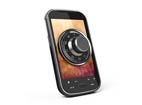Technology companies are accustomed to identifying the categories in which their products exist by acronyms. This can get rather complicated and even a bit funny as the various categories morph and increasingly bleed into each other.
Next year, Dell will release products into what Datamation refers to as the Enterprise Mobility Management (EMM) category. The idea is that EMM is more comprehensive than its antecedents:
Instead of current piecemeal approaches to managing “bring your own device” (BYOD) environments, Dell EMM will enable customers to “take advantage of an integrated mobility solution for secure endpoint management of devices and workspaces,” boasted the company in a statement. The solution enables one-stop access and configuration of the product’s mobile device management (MDM), mobile device management (MDM) and mobile content management (MCM) capabilities, enabling quick MDM implementations.
The story says that the product will included encryption security, compliance reporting policy management, and the ability of users to control workflows. The platform, Datamation reports, offers a virtual management server and console app for VMware.
That is a lot of information, but still leaves open the question of precisely what EMM is. IT-TNA’s Steve Wexler, who duly notes that he attended Dell World 2013 in Austin as the vendor’s guest, sums EMM up pretty succinctly:
EMM combines mobile device management (MDM), mobile application management (MAM), and mobile content management (MCM) with a secure remote access gateway (SonicWALL/SRA) to establish secure endpoints.
The bottom line is that attempts are being made to create security platforms that protect the device, the data, and the communications between that endpoint and the back-office infrastructure to which it connects. The profusion of acronyms is a byproduct of vendor scrambling to find the right mix of technologies to meet the sky-high security needs of mobile workers and the fact that the devices sometimes are owned by the organization and sometimes by the employee.
It seems to be a highly unsettled sector. In such an environment, the precise relationship between the acronyms and what the products do will be fuzzy. Network World offers a nice rundown of six MDM products. The reality is that they seem, to a greater or lesser extent, to offer features associated with MCM and EMM. The products are AirWatch, Apperian’s EASE, BlackBerry’s RIM BES10, Divide, Fixmo and Good Technology’s Good for Enterprise. The categories assessed are client support, server location price and features.
The focus may be permanently shifting, however. TechRepublic’s Patrick Gray suggests that the focus on the device is an antiquated remnant of the earlier days of IT in which the endpoint would be crammed with data. Today, ways are being found to keep sensitive apps and data off the endpoint and make them as “dumb” as possible. The crown jewels are stored in the cloud or elsewhere and dispatched only when needed. Focusing on protecting the devices which, he points out, are themselves worth less than a boardroom chair, is a waste of money.



